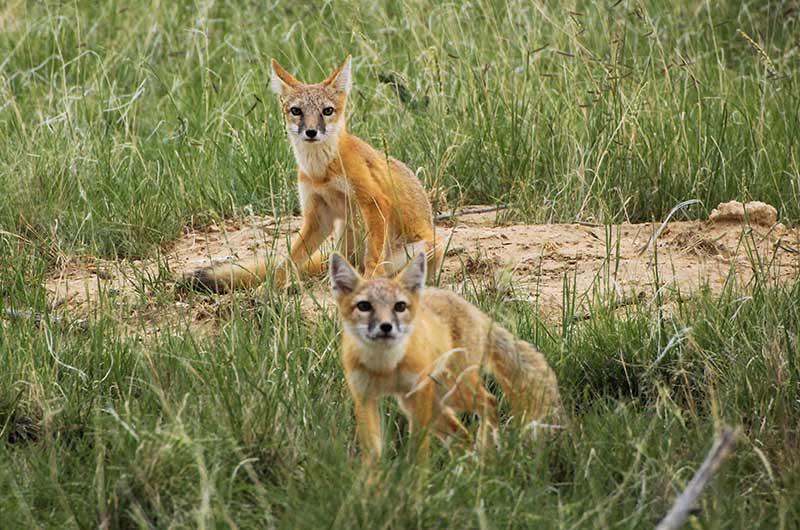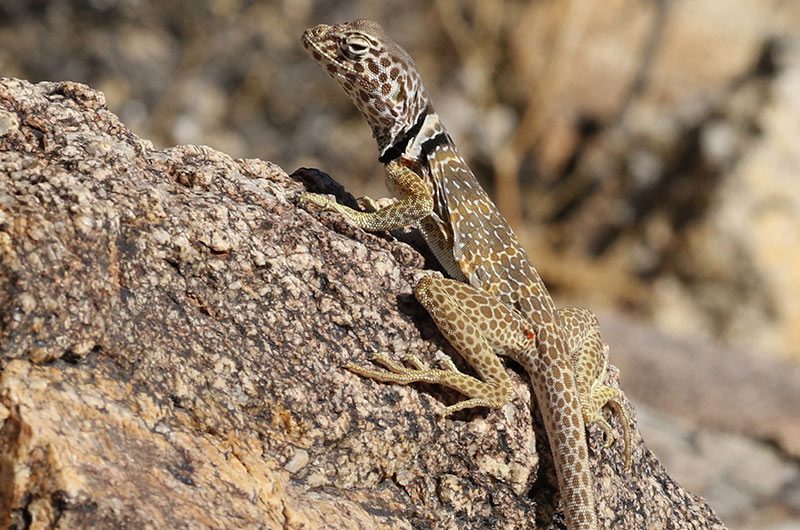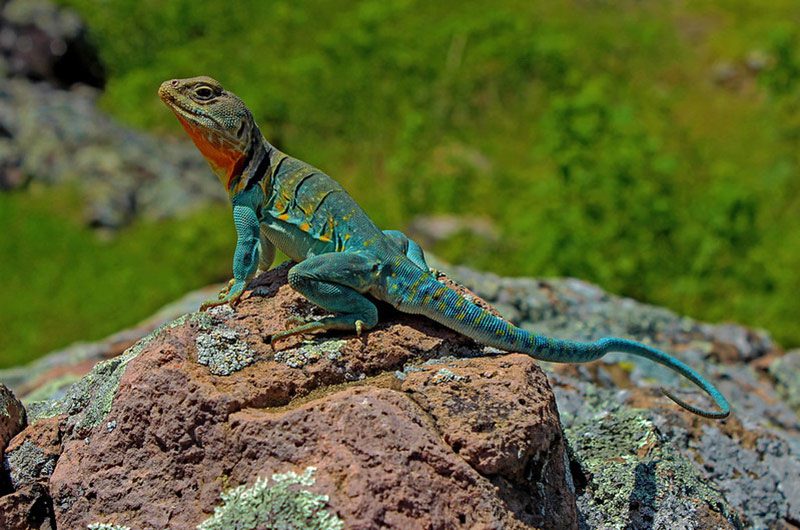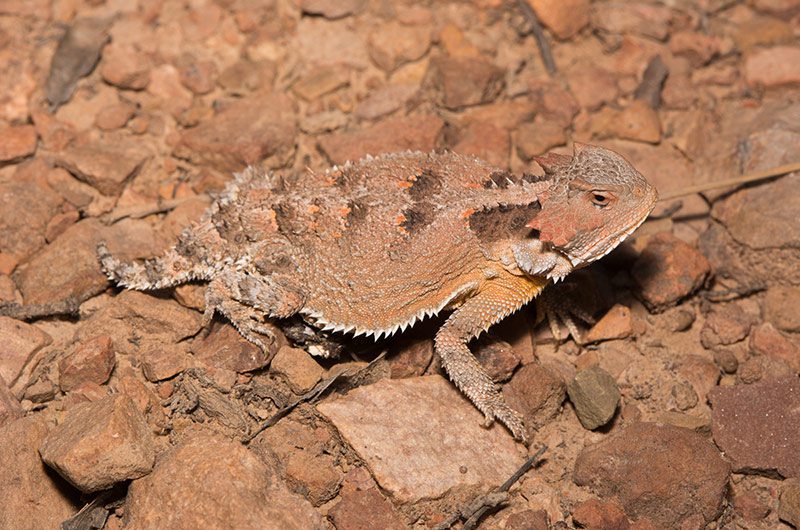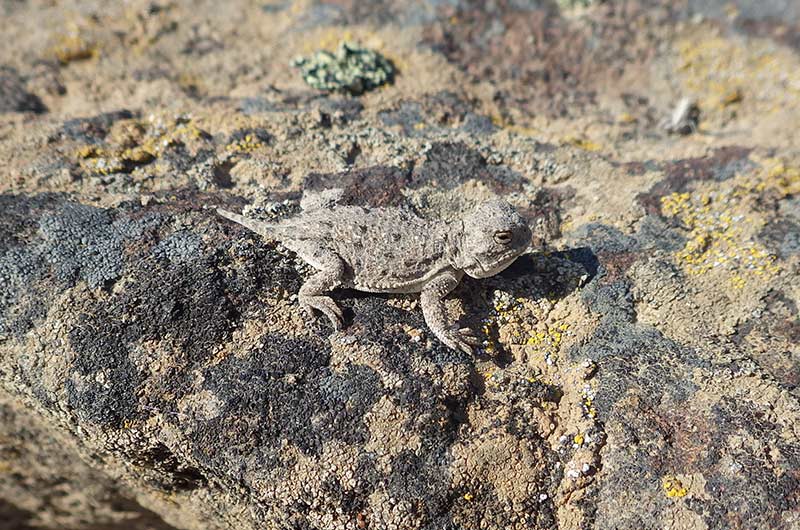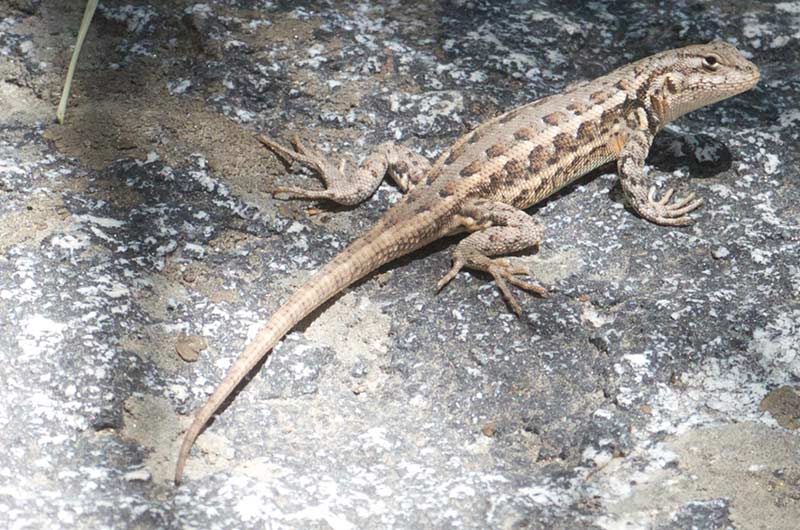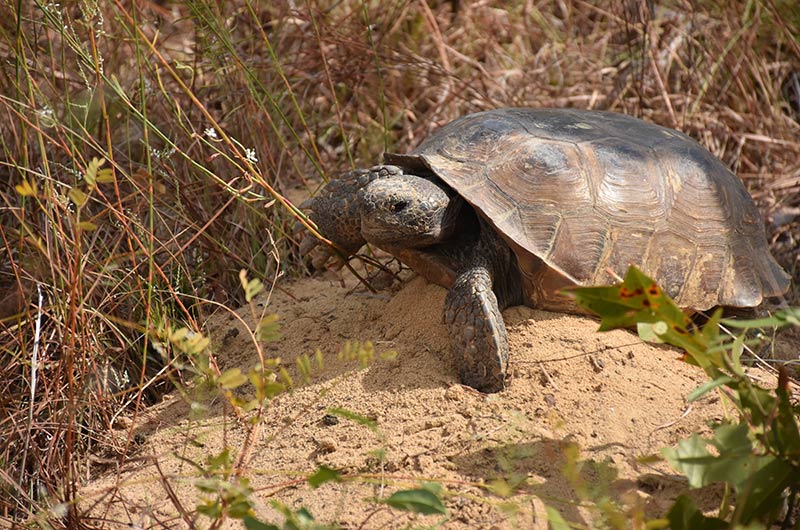LandPKS Learning
Habitat Hub
Factsheets and other helpful resources about the wildlife species living on your land (US only)
- 1
- 2
All Factsheets Spanish
Todas las fichas de las especies del hábitat se encuentran en la aplicación Hábitat. Las fichas proporcionan información sobre cómo identificar la planta o el animal, consejos de observación, un dato interesante, información sobre el hábitat, actividades que beneficiarán a la especie, actividades que deben evitarse y recursos para la gestión de la especie.
Read moreGreat Basin Collared Lizard
Collared lizards are one of the only lizards that can run using only their hind legs. They are fast with strides up to three times their body length.
Read moreEastern Collared Lizard
Eastern collared lizards are very alert—and very fast! They’re well adapted to running around their rocky habitats and jump among rocks easily. At top speeds, they run using only their back legs! They have highly powerful jaws capable of delivering a strong bite that can break the skin if captured.
Read moreGreater Short-Horned Lizard
Greater short-horns are the only lizard species found in Alberta and Saskatchewan, Canada.
Read morePygmy Short-Horned Lizard
Pygmy short-horned lizards emerge from a period of inactivity in the spring for mating season, where females give birth to 3-15 young. They are typically sexually mature within two years of birth.
Read moreAll Factsheets English
All the factsheets for species habitat found in the Habitat app. The factsheets provide information on how to identify the plant or animal, observation tips, an interesting fact, habitat information, activities that will benefit the species, activities to avoid, and resources for managing for the species.
Read moreCommon Sagebrush Lizard
Common sagebrush lizards can drop their tails to escape predators. The tail can regenerate like the prairie lizard, but it is usually shorter and a slightly different color than the original tail.
Read moreGopher Tortoise
Gopher tortoises create their own burrows which are 3-52 ft/1-16 m long and 9-23 ft/3-7 m deep. More than 350 different kinds of animals are known to share burrows with gopher tortoises from lizards and toads to insects. Some including the six-lined racerunner, gopher frog, gopher mouse, and cave cricket are dependent upon the gopher tortoise burrows.
Read moreSonoran Desert Tortoise
Sonoran Desert tortoises eat a wide variety of wildflowers, grasses and cacti. However, they will also occasionally eat insects, especially when young. Some have even been observed scavenging road-kill lizards. Additionally, Sonoran Desert tortoises eat soil with calcium carbonate for nutrients.
Read moreMojave Desert Tortoise
Desert tortoise eggs and young are prey for many species, including Gila monsters, snakes, raptors, skunks, kit foxes, and coyotes. Ravens can cause a substantial decline in desert tortoise populations, especially near developed areas. However, once a desert tortoise reaches adulthood, predation risk is far lower and annual survivorship surpasses 90%.
Read more- 1
- 2
Mobile App | Data Portal | Knowledge Hub | Habitat Hub | Learning Collections | Blog | About | Contact | Support

